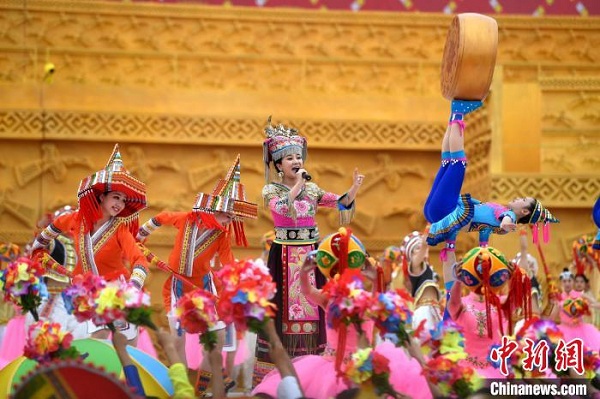Guangxi embraces increase in ethnic minority people

Performers in traditional customs of ethnic minority groups stage performances. [Photo by Yu Jing/China News Service]
The population of ethnic minority groups in Guangxi Zhuang autonomous region have seen a growth rate of 9.92 percent over the past decade, higher than that of the region's total population, officials from the region's leading group on the seventh national population census announced on May 13.
With the biggest ethnic group population among all autonomous regions in China, Guangxi now has a total of 18,808,000 ethnic minority people living in the area, accounting for 37.52 percent of the region's total population, and 0.34 percentage points higher than in 2010.
Of this total, 15,722,000 are from the Zhuang ethnic group, accounting for 31.36 percent of the region's total population.
People of different ethnic groups in Guangxi are now living and working in peace and contentment. The population of the Han ethnic group in Guangxi climbed by 8.31 percent compared with 2010, while that of the Zhuang ethnic group grew by 8.81 percent over the same period. Populations of other ethnic minority groups such as Yao, Miao, Mulam, Maonan and Hui have also seen increases.
Statistics indicate that the Guangxi population contains all 56 ethnic groups of China.
The number of family households with members from the Han ethnic group and other ethnic minority groups expanded by nearly 30 percent in the past decade, and that of family households with members from different ethnic minority groups increased by around 25 percent.
The male to female ratio in Guangxi's ethnic groups stands at 104.66, which is a slight drop compared with that in 2010.
Officials pointed out that the results fully demonstrate Guangxi's achievements in emphasizing the development of ethnic minority groups.














